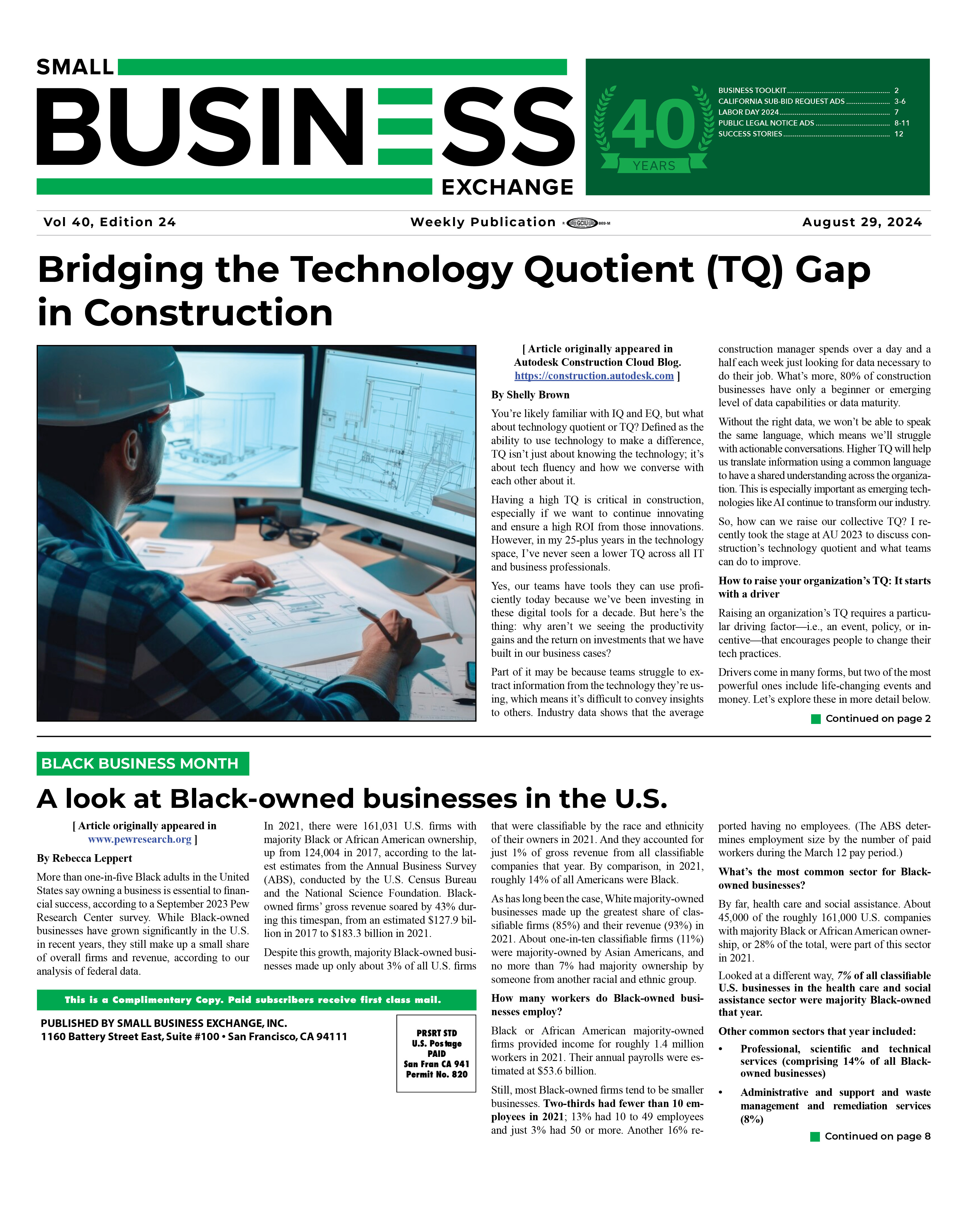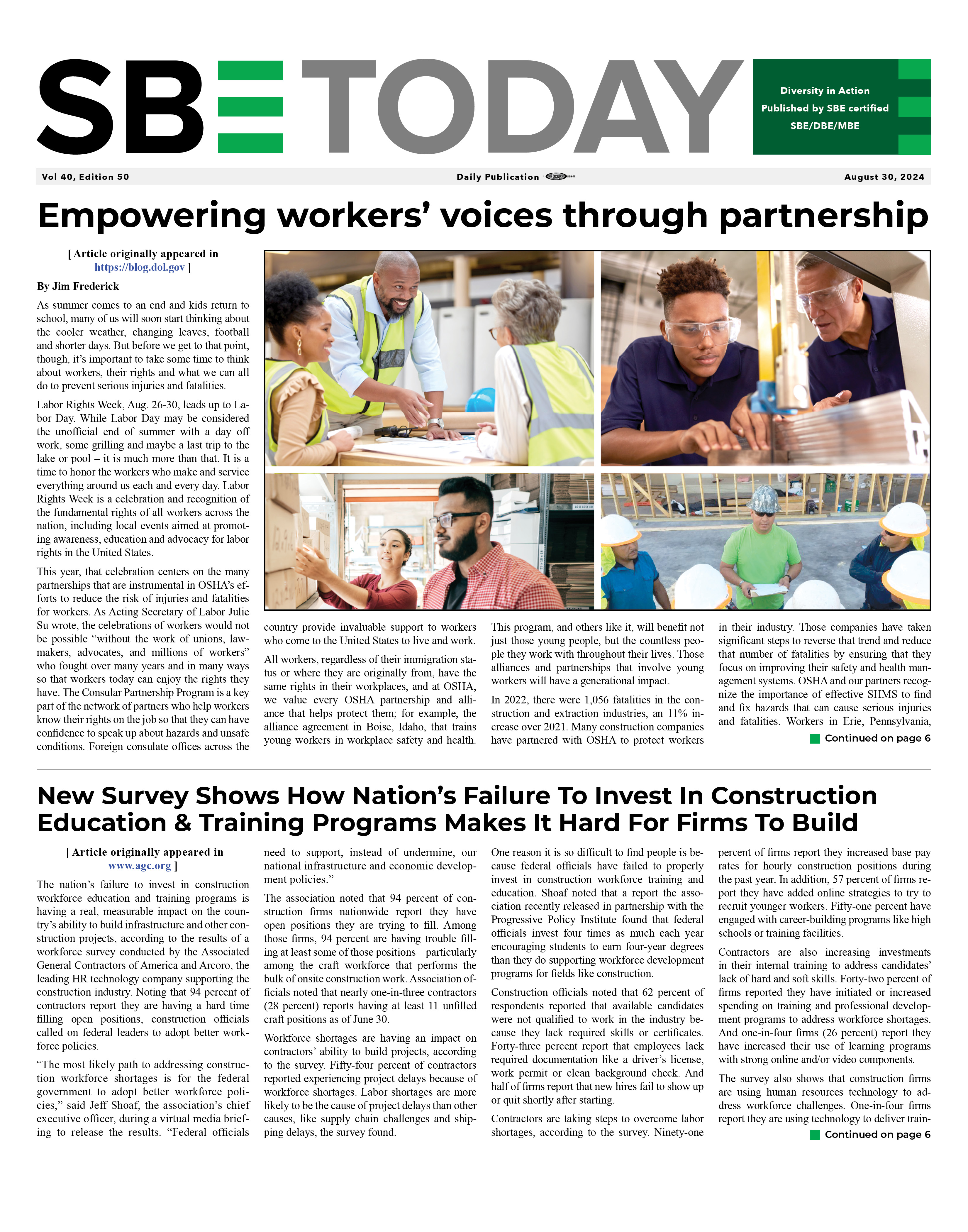New Survey Shows How Nation’s Failure To Invest In Construction Education & Training Programs Makes It Hard For Firms To BuildMasood
08/28/2024
94 Percent of Construction Firms Report Having a Hard Time Finding Workers to Hire, Undermining Efforts to Build Infrastructure & Other Projects As Industry Calls for Better Federal Workforce Policies The nation’s failure to invest in construction workforce education and training programs is having a real, measurable impact on the country’s ability to build infrastructure and other construction projects, according to the results of a workforce survey conducted by the Associated General Contractors of America and Arcoro, the leading HR technology company supporting the construction industry. Noting that 94 percent of contractors report they are having a hard time filling open positions, construction officials called on federal leaders to adopt better workforce policies.
“The most likely path to addressing construction workforce shortages is for the federal government to adopt better workforce policies,” said Jeff Shoaf, the association’s chief executive officer, during a virtual media briefing to release the results. “Federal officials need to support, instead of undermine, our national infrastructure and economic development policies.”
The association noted that 94 percent of construction firms nationwide report they have open positions they are trying to fill. Among those firms, 94 percent are having trouble filling at least some of those positions – particularly among the craft workforce that performs the bulk of onsite construction work. Association officials noted that nearly one-in-three contractors (28 percent) reports having at least 11 unfilled craft positions as of June 30. Workforce shortages are having an impact on contractors’ ability to build projects, according to the survey. Fifty-four percent of contractors reported experiencing project delays because of workforce shortages. Labor shortages are more likely to be the cause of project delays than other causes, like supply chain challenges and shipping delays, the survey found. One reason it is so difficult to find people is because federal officials have failed to properly invest in construction workforce training and education. Shoaf noted that a report the association recently released in partnership with the Progressive Policy Institute found that federal officials invest four times as much each year encouraging students to earn four-year degrees than they do supporting workforce development programs for fields like construction.
Construction officials noted that 62 percent of respondents reported that available candidates were not qualified to work in the industry because they lack required skills or certificates. Forty-three percent report that employees lack required documentation like a driver’s license, work permit or clean background check. And half of firms report that new hires fail to show up or quit shortly after starting.
Contractors are taking steps to overcome labor shortages, according to the survey. Ninety-one percent of firms report they increased base pay rates for hourly construction positions during the past year. In addition, 57 percent of firms report they have added online strategies to try to recruit younger workers. Fifty-one percent have engaged with career-building programs like high schools or training facilities.
Contractors are also increasing investments in their internal training to address candidates’ lack of hard and soft skills. Forty-two percent of firms reported they have initiated or increased spending on training and professional development programs to address workforce shortages. And one-in-four firms (26 percent) report they have increased their use of learning programs with strong online and/or video components. The survey also shows that construction firms are using human resources technology to address workforce challenges. One-in-four firms report they are using technology to deliver training programs for workers, association officials noted. Meanwhile, 34 percent of respondents noted they have partnered with a third-party firm to establish training courses and professional development. “As a technology company focused on providing solutions designed for contractors to address workforce challenges, the shortage of qualified employees in the industry is something we understand first-hand from our customers,” says Carrie Gardenhire, Director of Association Partnerships at Arcoro. “From the survey results, we see additional opportunities for contractors to leverage HR technology to make their recruiting, employee development and retention efforts more efficient and impactful.” Shoaf noted that the association is taking a range of steps to help the industry cope with labor shortages. AGC has partnered with its chapters to run more than a dozen targeted digital advertising campaigns designed to reach and recruit new workers. The association has created recruiting resources for member firms and its chapters. And it regularly hosts virtual and in-person gatherings to share workforce development success stories. In addition, AGC chapters run a host of training and recruitment programs. They have partnered with local school districts to create new construction academies. They have created pre-apprenticeship and registered apprenticeship programs. They have built and supported networks of career and technical education teachers. And they host dozens of construction career fairs each year, among many other workforce efforts.
But association officials said more must be done to address construction workforce shortages. They called on Congress and the White House to significantly boost funding for construction-focused education and training programs. They urged Congress to allocate more funds for workforce training as part of the Workforce Innovation and Opportunity Act and to boost funding for in-school construction programs as part of the Perkins Vocational and Technical Education Act.
“Considering all that this industry and our association are doing to prepare, recruit and retain new workers, we are confident that better federal workforce policies will make a meaningful and lasting difference for the better when it comes the construction workforce,” Shoaf added.
The association and Arcoro conducted the Workforce Survey in late July and early August. Nearly 1,500 firms completed the survey from a broad cross-section of the construction industry, including union and open shop firms of all sizes. The 2024 Workforce Survey is the association’s 12th annual workforce-related survey. Back To News |
|
|




